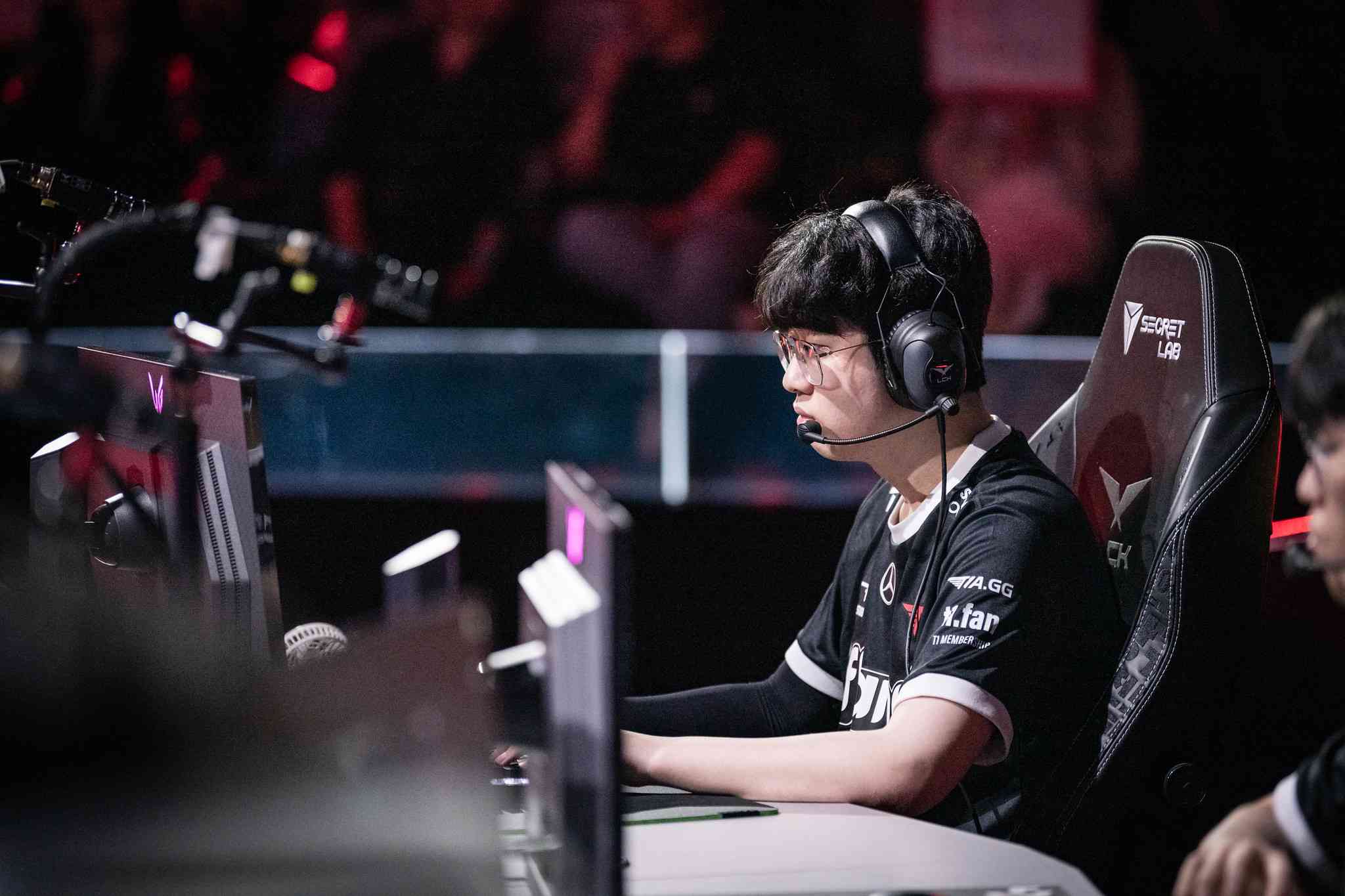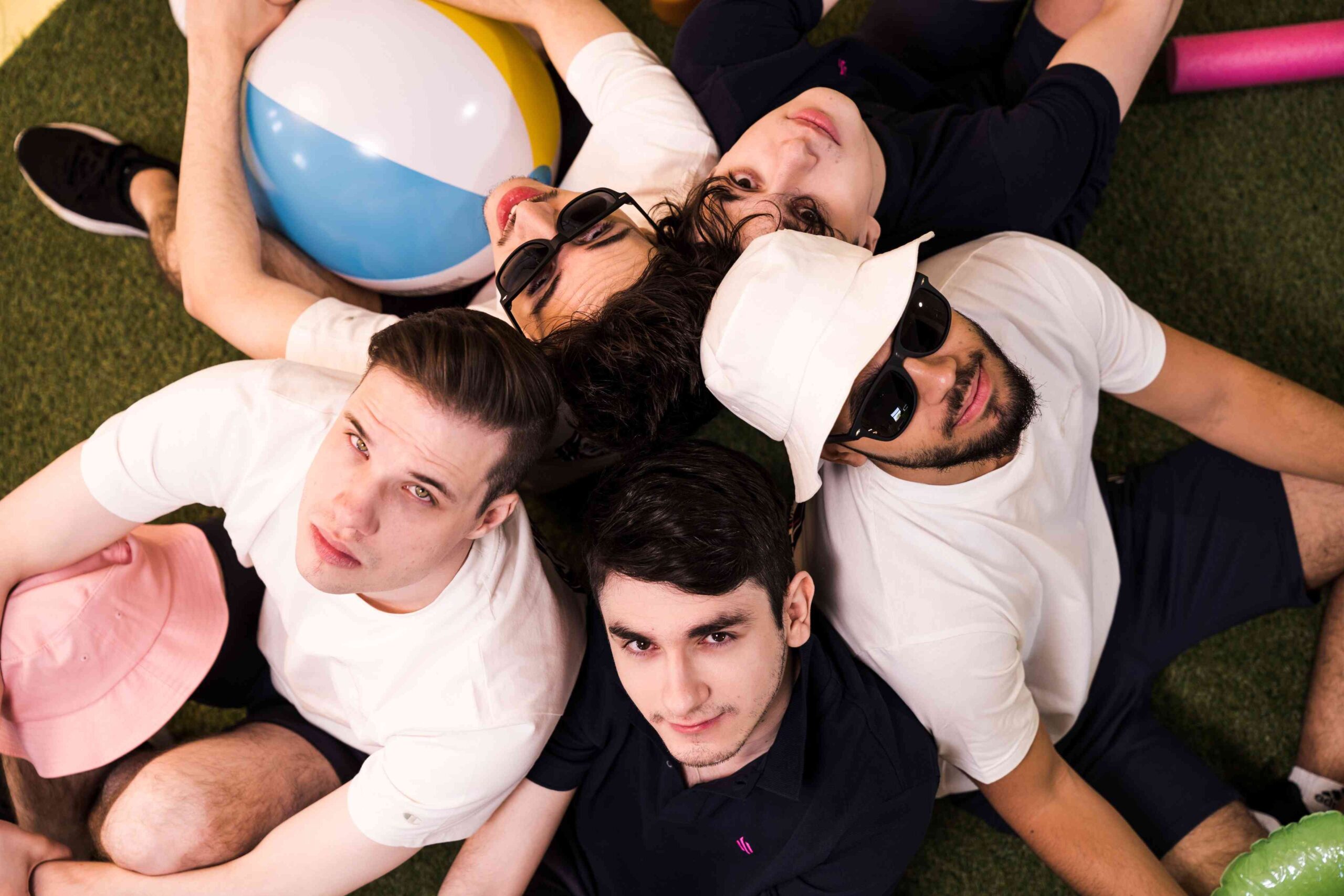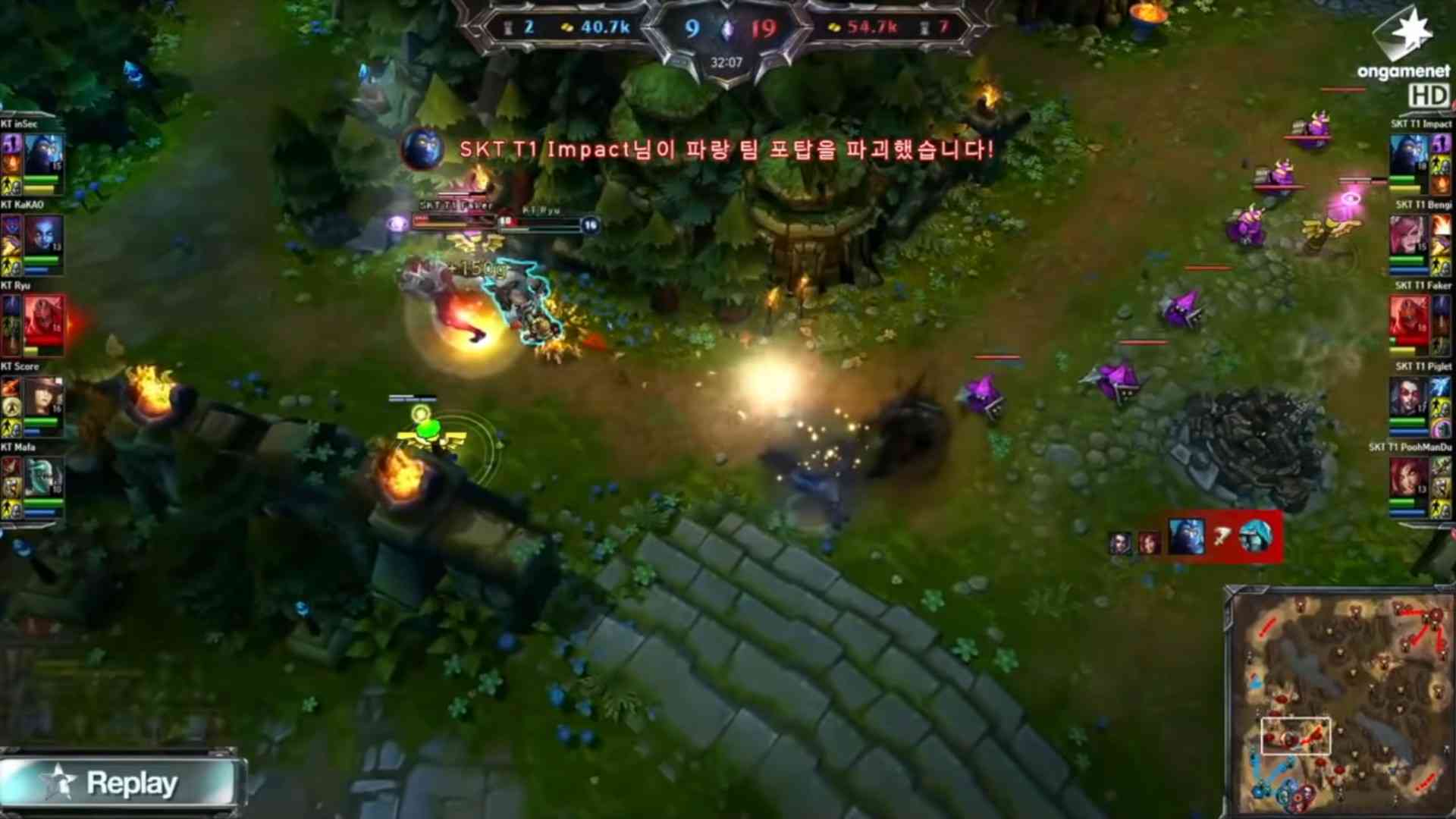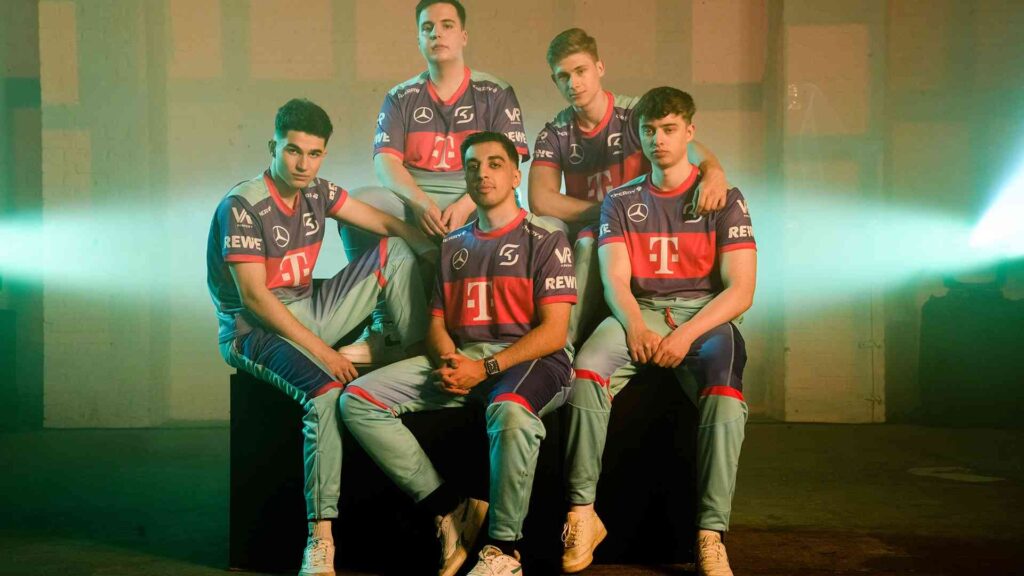As the LCK enters the second leg of its double round-robin regular season and the LEC kicks off its Groups stage, a feeling prevails among many of the viewers of both leagues: boredom. To what do we owe this impression? Should Riot do something about it? Can they?
Contents
Viewership against the current
Let us first get our facts right. Figures provided by Esports Charts tend to confirm a global mood on social media claiming that games get increasingly boring and that people are tuning out. The 2023 LCK Summer Split has so far gathered an average of 180,832 viewers, whereas 234,198 were watching the Spring Split. Such a decrease is to be expected as we move into summer: the northern hemisphere’s weather improves (where most viewers live) and prompts people to step outside rather than watch some League of Legends. This decrease is, however, bigger than last year, during which the LCK only lost about 23,000 viewers on average between spring and summer. As for the LEC, although the loss of viewers between the same periods actually decreased from about 60,000 to 50,000, this year’s metrics remain unsatisfying compared to last year’s.
This data is obviously limited. They only include three weeks of competition, and not the most interesting ones, as the data from other splits include playoffs. Not to mention that LCK Spring 2023 happened to be the most popular tournament in League of Legends history. Still, this trend is worth analyzing as visual impressions and fan discussions speak in favor of these decreases.
Note also that we won’t mention the LCS, as it’s not even a priority for Riot at the moment, or the LPL, which wasn’t hit by any sort of MSI hangover and whose different culture and team diversity seem sufficient to save the entertainment.
The LCK and the reverential playstyle
Getting bored with the LCK and/or the LEC is probably multifactorial. But one thing is certain: we don’t lack storylines. In Korea, there’s T1’s redemption arc towards Worlds and finally bringing a final home, Gen.G’s fight to retain its crown, KT Rolster’s revival, and DRX’s adjustments; And in Europe as well, there’s Fnatic’s rise from the ashes, BDS’s blossoming continuing with Worlds in sight, and super team Vitality’s last chance, which are all good reasons for tuning in to one of these two championships.
The usual suspect is none other than the meta. Despite the recent itemization upheaval and earlier buffs on engage supports, pro play is still infested with enchanters. Zeri Yuumi duos are still way too common, and although Lucian and Nami are less to be seen together in the bot lane, the gap was filled by Milio and the return of Aphelios. Elsewhere, K’Sante, Sejuani and Maokai are way too often on duty, and even a revenant like Annie is not mechanically impressive. In the end, Neeko’s rework seems to be our only ray of sunshine.
 Choi ‘Zeus’ Woo-je here reflects T1’s post-MSI hangover (Image Credits: LoL Esports Korea).
Choi ‘Zeus’ Woo-je here reflects T1’s post-MSI hangover (Image Credits: LoL Esports Korea).Moreover, the adaptation to the meta has also proven disappointing’ especially in Korea, considering the game knowledge and understanding of players and staff in the region. While best-of-3 series are believed to improve the teams’ overall level, this year’s drafts look robotic, lacking adaptation sometimes from one game to the next. On the rift, the collective level of execution, with perhaps the exception of KT and Gen.G, does not match the individual skill of the LCK. After a generally disappointing laning phase in terms of skill-checking, there is a sort of gentlemen’s agreement to wait for neutral objectives to initiate a fight. Too few skirmishes happen to accelerate the games. Likewise, there even seems to be a gentlemen’s agreement to respect first come, first served positioning, leading teams not to try to contest and outplay if the opponents hold the position first.
With the conservative League of Legends Korean culture at its peak, games unfold at an incredibly slow pace. More importantly (to them), it is probably not helping with preparations to face China at the Asian Games and Worlds.
The Berlin mental wall
The LEC, on the other hand, is more homogenous. More than the LCK and more than it is supposed to be. Some teams do, however, show signs of mental issues. Vitality, Astralis, and to a lesser extent, KOI, seem to have mentally exploded in spite of the undeniable quality in the roster.
Indeed, Luka ‘Perkz’ PerkoviÄ, midlaner for the French team, said in an interview with Eclypsia that ‘the simplest explanation is that we choked,’ adding that they lost confidence on stage even if they had only lost ‘one or two’ blocks of scrims. Meanwhile, the Danish organization’s toplaner Finn ‘Finn‘ WiestÃ¥l recently described in a tweet the training atmosphere as ‘one of the most stressful’ environments he has been in. Such mental setbacks go on to explain the lower level (compared to that of winter) of the LEC and the rather uninspired body language we saw on stage.
This level can also be explained by other factors, including, but not limited to: the three-split season generating less meaningful matches, the fast-paced format leaving no room for mistakes, multiple rosters not meeting expectations (in fact, only G2 has so far), plus the inalienable characteristics of summer and the arrival of sunny days on young adults trying to pursue an athletic rigor.
 Team BDS in a summer photo shoot (Image Credits: @TeamBDS).
Team BDS in a summer photo shoot (Image Credits: @TeamBDS).The philosophical debates of boring sports
With this micro boredom crisis in mind, Riot Games has some cards in its hands to revert the situation. But one can first simply wonder if they should intervene at all. Sports, after all, are more about performance than entertainment. It is not rare for some traditional sports to go through periods that are less brilliant and/or entertaining ‘ think of football before IFAB abolished the backpass or tennis in its serve-and-volley era.
League of Legends is no exception, especially since it’s heavily dependent on the developers’ patches. Should governing bodies always intervene before the audience goes away, or should they let performance, stakes and optimization prevail over entertainment? The philosophical debate is interesting. It might be shortened by the fact that the LCK and the LEC broadcasts are actually shows, though, and sponsoring brands might remind Riot of just this in case the viewership plunges.
Riot’s options: new rules or heavy patches?
So, what can Riot actually do short-term to dynamize its leagues? Let’s distinguish several possible solutions, the first one being competitive soft rules. They would consist of small changes that don’t (or barely) affect the professional players’ gameplay while still enhancing the viewers’ experience. For instance, Riot could force a rotation of skins on its most used champions in order to break the visual redundancy. This way, if players select the same champions all night long, we would at least see different models of these champions, preventing everyone from going crazy thinking they are watching the same game over and over again. Another soft competitive rule would be to control the seeding of the dragon soul at play in the game and notify the teams. Not only would it likewise break the visual redundancy, but it might also change the drafts ‘ you’re surely not picking Poppy on an infernal map.
 Lee ‘Faker’ Sang-hyeok’s crazy outplay on Ryu ‘Ryu’ Sang-wook was a result of the game five blind picks tradition (Image Credits: LoL Esports/ongamenet).
Lee ‘Faker’ Sang-hyeok’s crazy outplay on Ryu ‘Ryu’ Sang-wook was a result of the game five blind picks tradition (Image Credits: LoL Esports/ongamenet).The next category of solutions would be competitive hard rules. You guessed it, these rules would still focus on the professional scene but would have drastic consequences on the way the game is played. Not necessarily getting into weird rules such as drafting in blind picks (which was formerly used in LPL and LCK games 5!), we could imagine permanently banning some champions (sorry, little cat) or limiting them with per-night quotas. Still, in this idea of breaking redundancy, some or all champions from the previous game could be barred from re-entering the next one. Although this would create a renewed interest in the picks & bans, it would, however, question the integrity as the order of play would artificially gain in importance. That is why such a rule may make more sense if applied to a series. Also, what if we imposed quotas on teams? For each patch, determine priority champions and set a maximum of picks of said champions by teams.
Finally, another avenue Riot could look to pursue is directly related to the League of Legends everyone plays. In-game solutions include massive patches that overhaul meta champions. Give the community what it craves: destroy Yuumi, shut Zeri down for a while, kill enchanters, go back to carrying junglers and playmaking toplaners. Whereas one might think that today is a bit too close to the Worlds for Riot to hustle the meta, there are actually five or six patches to come before the deadline. Last year, drastic meta changes occurred between the Summer Split and Worlds ‘ notably successfully killing Zeri, though not Yuumi. We might just be on the right track with the recent advent of Neeko and Ivern, with maybe Ryze and Rumble on the way. Incidentally, now may be the time to make room to engage supports.


